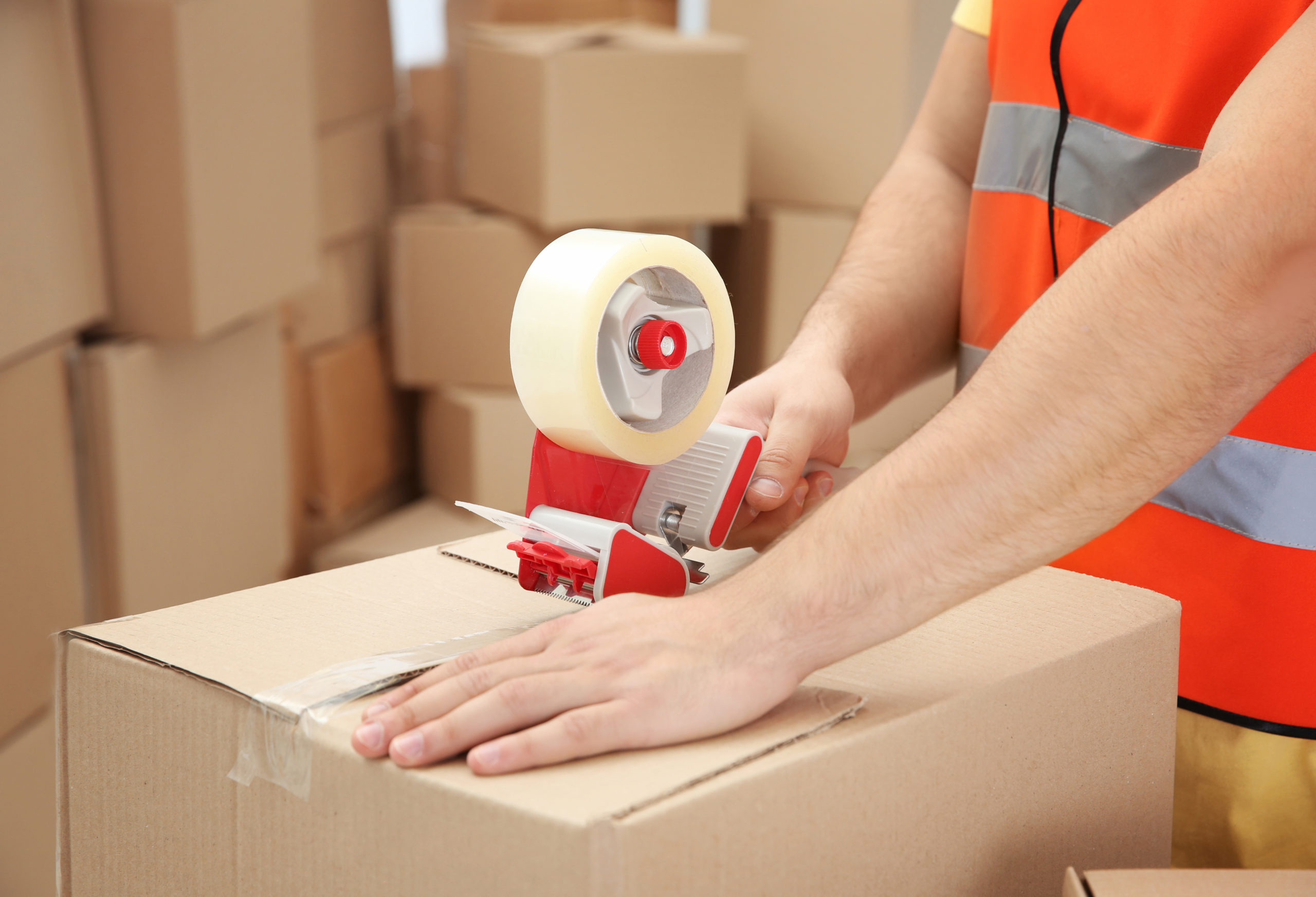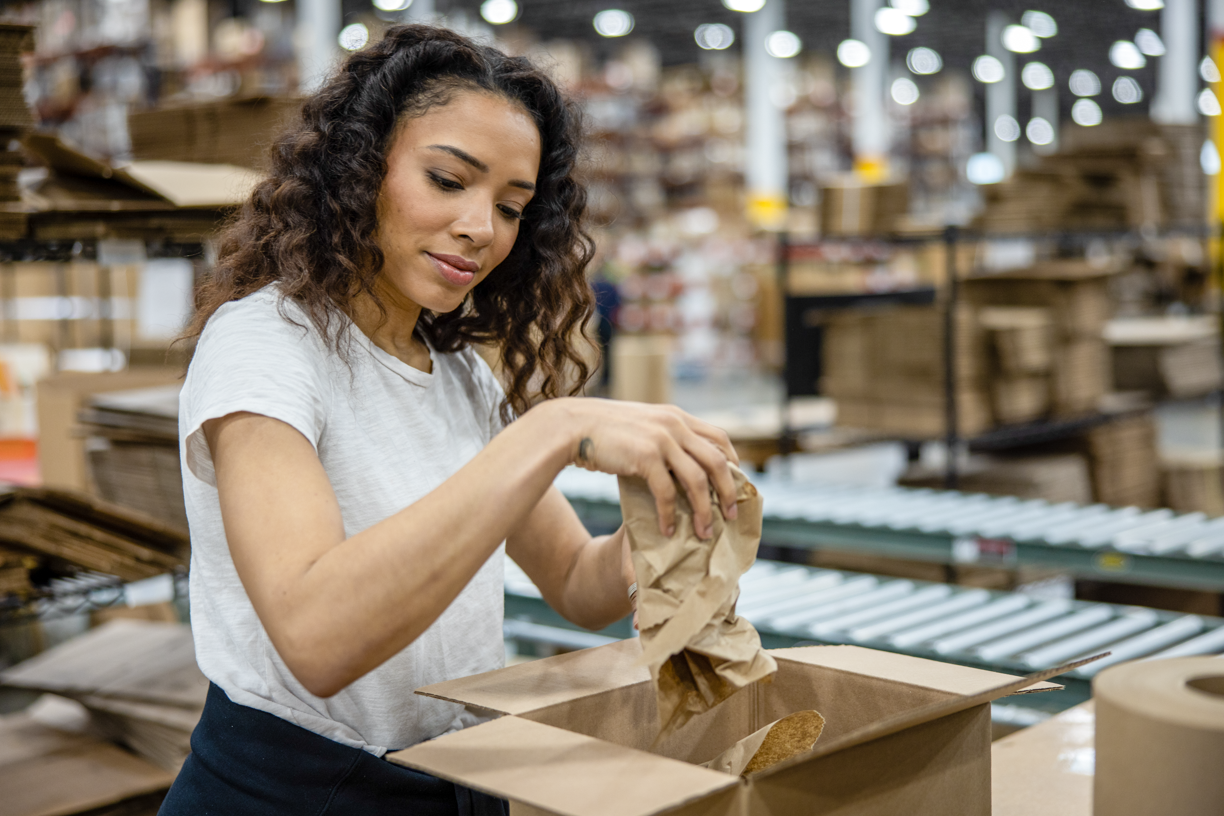Share this
Everything You Need to Know About Ecommerce Packaging
by Rin Mosher on Feb. 8, 2024

Ecommerce orders face a lot of turbulence when traveling from Point A to Point B. From being stacked and carried to bumped and potentially dropped, purchases need to be protected from the dangers present throughout every stage of the fulfillment journey. Ecommerce packaging does this all the way to the last mile. It's a crucial aspect of sustainable and cost-effective shipping, not to mention a major determinant of the experience customers have when unboxing their purchases.
This article will discuss the valuable role packaging plays in ecommerce, the types that exist, and how you can pick the right shipping materials for your products.
Why Ecommerce Packaging Is So Important
Online stores ship products using a variety of means of transportation, including trucks, planes, and ships. This means that packages are handled by multiple individuals, machines, and conveyor systems before reaching their final destination. There are many opportunities for things to go wrong, and oftentimes, it's packaging that determines whether a product arrives intact or damaged.
The literal and figurative costs of overlooking ecommerce packaging are plentiful. For one, customer satisfaction takes a hit when products arrive damaged or are not presented in a professional, appealing manner. This can lead to negative reviews, returns, and loss of future business. Damaged products also result in a financial cost - not only do sellers have to replace or refund the item, but they also incur the additional expenses associated with reverse logistics.
Lots of thought needs to be put into selecting the packaging itself as well. Not all materials are made equal, and some products will require more protection than others. Glass bottles, for example, are much more prone to breaking than plastic ones. How well you package these items will directly influence the cost and complexity of shipping them.
Types of Ecommerce Packaging
Broadly defined, ecommerce packaging encompasses the material and design elements used to protect and present products as they're shipped out to customers. This includes cardboard boxes, bubble mailers, envelopes, dunnage, and more. See a breakdown of their many varieties below.
Shipping Boxes
Shipping boxes are containers made from various materials, such as cardboard or plastic, that are used to protect and transport items during shipping.
Common Types of Shipping Boxes
Corrugated Boxes: Corrugated cardboard consists of an outer liner, an inner liner, and fluting material in between. This construction enables boxes to withstand rough handling during shipping while maintaining a degree of flexibility and foldability for the packing process.
Rigid Boxes: Rigid boxes are made from thicker materials such as chipboard or solid cardboard. They are often used for luxury items or delicate products that require extra protection during shipping.
Folding Cartons: These are boxes made from paperboard that have been printed, laminated, cut, folded, and glued. This material is thinner than standard corrugated cardboard but can be easily folded into different shapes.
Mailer Boxes: Mailer boxes are lightweight, self-sealing containers that are commonly used for books, stacks of documents, and other flat items. They’ve gained popularity among subscription box brands looking to cost-effectively ship multiple small products in one rigid package.
Custom vs. Standard Ecommerce Shipping Boxes
Ecommerce shipping boxes are made in a range of standard sizes, with the most popular being 8" x 6" x 4", 10" x 8" x 6", and 12” x 10” x 5”. These measurements can accommodate most small to medium products, albeit not always perfectly. Sometimes, businesses use custom shipping boxes to minimize the amount of space their packages take up and to provide a more tailored and professional packaging experience for their customers.
Bubble Mailers/Soft Packs
Bubble mailers, soft packs, and envelopes are similar items that fall under their own category of ecommerce packaging. They're characterized by their pouch shape and cushioning, which are designed to protect smaller items during the shipping process.
Types of Bubble Mailers
Bubble mailers are available in a variety of types and styles to accommodate different needs. The most commonly used type is the poly bubble mailer, which is made from a durable plastic material with an inner layer of bubble wrap for added cushioning. These are lightweight, waterproof, and tear-resistant, making them ideal for shipping small and delicate items.
Paper-padded bubble mailers have a kraft paper exterior with an inner layer of bubble wrap. They're a more eco-friendly option, but may not provide as much protection as their plastic counterparts. Another type is the rigid or board-backed bubble mailer, which has a thicker exterior and provides more rigidity and protection for its contents.
Dunnage
Dunnage is a term used to describe any type of material or equipment that is used to support, protect, or secure goods during transportation. It can include a wide range of items made from various plastic and paper-based materials. See an overview of the most common forms below.
Packing Peanuts
Packing peanuts, also known as foam peanuts or styrofoam packing chips, are small pieces of lightweight expanded polystyrene foam. They are commonly used in packaging to fill empty spaces and provide cushioning for fragile items. The unique shape of packing peanuts allows them to interlock, creating a protective layer that helps to prevent damage during shipment. The main drawback of packing peanuts is their effect on the environment, as they are not biodegradable. Consumers don’t like them either; packing peanuts are quite messy and can be hard to clean up if spilled.
Paper Dunnage
Paper dunnage is another popular form of packaging material made from recycled paper fibers. It can take on many forms, like pre-cut shreds, rolls, or sheets. Lightweight and easy to dispose of, paper dunnage is a practical and cost-effective choice for many ecommerce businesses. Just be aware that it may not offer as much cushioning or protection for fragile items compared to other materials.
Styrofoam and Cardboard Inserts
Styrofoam and cardboard inserts cater to items that require precise positioning within a box. Cutouts are specially made based on a product's size and shape to prevent movement and shifting during transit. This type of dunnage is commonly used for fragile items such as electronics, glassware, and ceramics.
How to Pick Ecommerce Packaging
We've established that ecommerce packaging comes in various materials, sizes, and types. You can use multiple materials in your packaging strategy or stick to one, depending on your business needs and budget. But how do you decide which ecommerce packaging is right for you? Here are a few factors to consider:
Product Size and Weight
The size and weight of your product are crucial factors to consider when choosing ecommerce packaging. As mentioned earlier, certain box sizes may not be the perfect fit for your products, leading to wasted space and potentially higher shipping costs. Measure and weigh items to find a balance between protecting the product and minimizing packaging materials.
Product Type
The type of product you are shipping also plays a role in choosing the right packaging. Fragile or delicate items, for example, usually need to be encased in sturdier materials like corrugated cardboard. Clothing and soft goods may only require a poly mailer or envelope.
The same principle applies to dunnage - tissue paper and bubble wrap are usually sufficient for lightweight items, while heavier products may need more cushioning.
If you're shipping product bundles or subscription boxes, they'll likely need a custom box or packaging solution to ensure everything fits securely and looks presentable.
Branding and Marketing
Ecommerce packaging is not just about protecting your product during shipping. It also serves as an opportunity to showcase your brand and create a memorable unboxing experience for your customers. Consider adding your logo, brand colors, and messaging to the packaging design to leave a lasting impression. For expert design solutions, you can work with a packaging design agency to create custom packaging that aligns perfectly with your brand identity and enhances the customer experience.
Sustainability
Recyclable or biodegradable ecommerce packaging isn't a requirement, but it can certainly be a selling point for environmentally conscious customers. Special composite materials often cost more than traditional ones and may not be as strong, so be sure to weigh the benefits against the added expense.
Special Needs
Do your products have special cold-chain storage requirements? Are they uniquely shaped or sized? Do they contain anything that might present a hazard during shipping, like liquids or lithium batteries? If so, you'll need to pick a packaging solution to suit. Putting the right protections in place ahead of time will ensure products remain intact, safe, and in good condition for your customers.
Packaging may not seem exciting, but its impact on shipping success and customer satisfaction couldn't be greater. It’s important to recognize this aspect of ecommerce fulfillment for what it is and invest enough time and resources into finding the right solution.
As a leading third-party logistics (3PL) company, Shipfusion has the resources and expertise to help you do just that. Our technology matches items with the best packaging options to deliver the best of both worlds - protection and cost-savings. We offer specialized kitting and bundling solutions for subscription boxes, can take on special warehouse projects, and accommodate custom shipping boxes as well. Reach out to a member of the team to learn more.
Share this
You May Also Like
These Related Articles

Perks Of Custom eCommerce Shipping Boxes

What is Dunnage in Shipping? Using it to Improve Shipping Efficiency and Costs

Finding The Right 3PL Ecommerce Fulfillment Partner
- April 2025 (18)
- March 2025 (26)
- February 2025 (26)
- January 2025 (37)
- December 2024 (16)
- November 2024 (23)
- October 2024 (22)
- September 2024 (27)
- August 2024 (9)
- July 2024 (8)
- June 2024 (5)
- May 2024 (8)
- April 2024 (8)
- March 2024 (6)
- February 2024 (6)
- January 2024 (5)
- December 2023 (3)
- November 2023 (3)
- October 2023 (5)
- September 2023 (4)
- August 2023 (2)
- July 2023 (1)
- June 2023 (4)
- March 2023 (2)
- October 2022 (1)
- September 2022 (5)
- August 2022 (4)
- July 2022 (7)
- June 2022 (4)
- May 2022 (4)
- April 2022 (6)
- March 2022 (2)
- February 2022 (1)
- January 2022 (3)
- December 2021 (2)
- November 2021 (4)
- October 2021 (2)
- September 2021 (5)
- August 2021 (4)
- July 2021 (4)
- June 2021 (3)
- May 2021 (2)
- April 2021 (3)
- March 2021 (3)
- February 2021 (3)
- January 2021 (2)
- December 2020 (4)
- November 2020 (2)
- October 2020 (4)
- September 2020 (2)
- July 2020 (5)
- June 2020 (4)
- May 2020 (2)
- April 2020 (2)
- March 2020 (4)
- February 2020 (1)
- December 2019 (1)
- May 2018 (1)
- March 2018 (2)
- February 2018 (3)
- January 2018 (3)
- November 2017 (3)
- July 2017 (4)
- March 2017 (3)
- February 2017 (5)
- January 2017 (3)
- December 2016 (4)
- November 2016 (6)
- October 2016 (6)
- October 2015 (1)
- September 2015 (1)
- June 2015 (3)
- May 2015 (3)
- August 2014 (1)
- July 2014 (1)
- March 2014 (1)
- February 2014 (1)